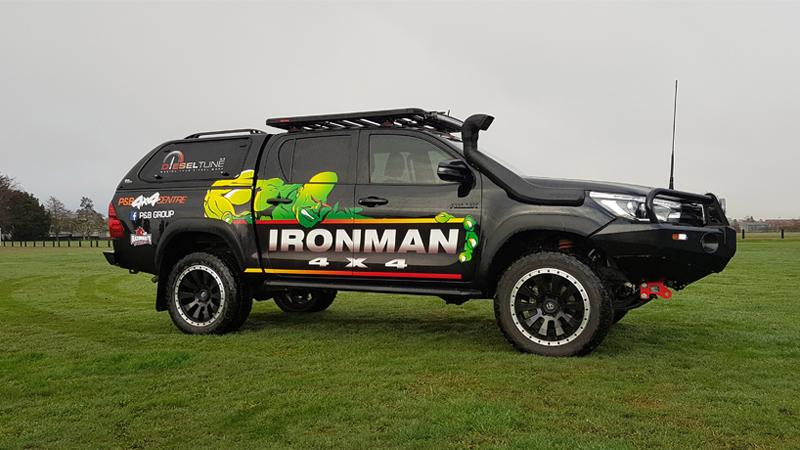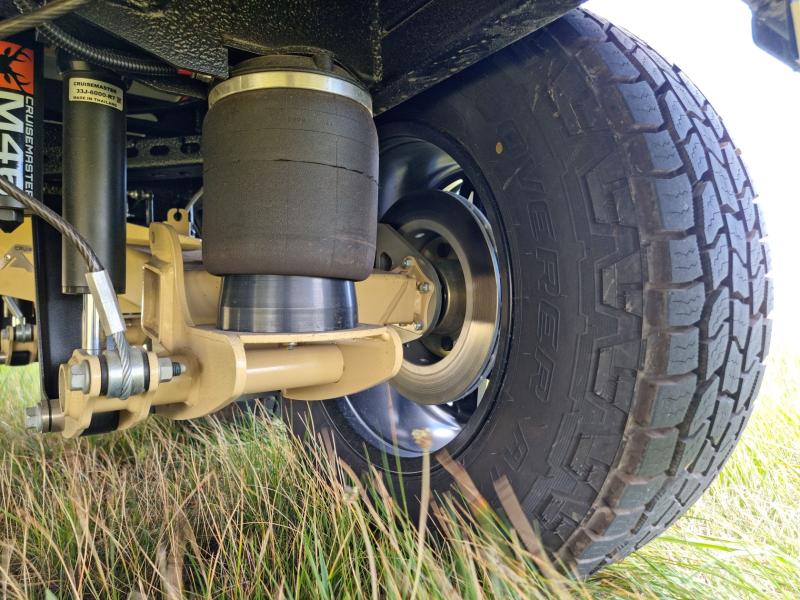With over 50 years experience in building suspension components, Ironman 4x4 have earned the title of suspension specialists and are well qualified to explain just how shocks and springs are made.
After deciding to bring out a replacement kit for a vehicle, the standard suspension is assessed, and then decisions made as to the lift height and shock absorber rates. Whether a coil spring is made progressive or linear depends on what the manufacturer has originally specified for the vehicle. Ironman typically brings out a range of spring rates from A to E, with A being the softest and E for the heaviest loads.
Most 4WDers will go for the B and C springs which are designed for a slight lift and a heavier load than standard.
Up she goes!
The lift can come from a taller spring, but also from a stiffer one. In fact, some lifted coils are the same height or even slightly shorter than stock because a thicker diameter bar is used, anything from one to five mm thicker depending on the application.
The other factor is the number of turns in the coil; the more turns, the softer the coil for a given height. It is important that a coil spring has a consistent diameter, as otherwise the coil will bend around the thinnest parts, which are then likely to break, and that also means the coil won’t compress and rebound as desired.
Cold or hot!
If the bar diameter is 18mm or less the coil is cold-wound – bent by a special machine into shape. At this stage, the coil is not a spring – if it was compressed it would stay compressed.
To convert it to a spring it is heat-treated by heating it to about 500°C and quenching it in oil. This gives the coil a memory, and it is now a spring.
When a coil is compressed the surface of the coil is placed under tension. This stresses the metal, and that can lead to fatigue. To relieve the tension the coil is shot-peened, which is a process of firing thousands of tiny little balls at the coil. The balls are less than one mm in diameter and the indentations they make expand the surface of the coil, relieving the tension.
The coil is now ready for scragging, which removes ‘set’, which is the length change caused by a compression beyond the elastic limit of the material. Scragging is done three times to remove all the set.
Much the same process is followed with the build of a leaf spring. The material is cut into strips of the correct length, the strips are then heat-bent, heat-treated to make it a spring and shot-peened on the inside of the curve.
More for less
The replacement leaves are typically thinner, but there are more of them; for example, the original set may have three leaves of 10mm thickness and the aftermarket five at six mm. This means the spring is more progressive and less harsh.
Another leaf-spring improvement is in the shackles. OEM shackles typically use rubber bushes, but there is a lot of friction between the rubber and the metal. Ironman uses polyurethane bushes, which rotate smoothly and permit the shackle to move far more freely, which in turn allows the spring to work more effectively.
It’s the little details like these that are the mark of the quality aftermarket supplier, and it is those same details that are worth paying for when you’re out in the bush or farm, where quality matters. All Ironman 4x4 suspension carries a three-year 60,000km warranty.
With more than 30 dealers throughout the country you can shop local or for more details contact www.ironman4x4.com or phone 0508 IRONMAN.







